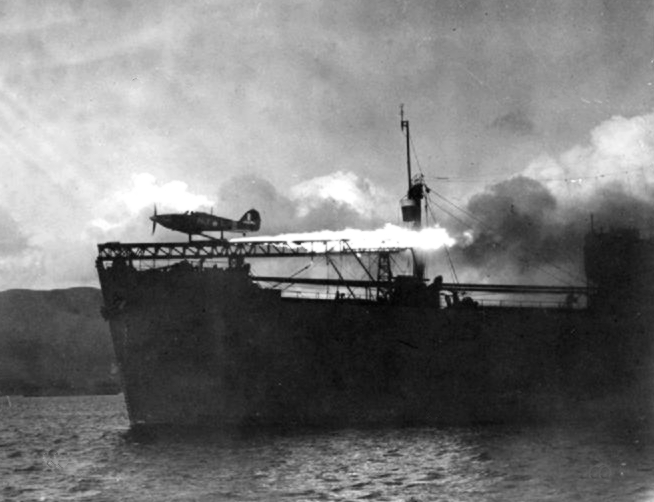|
Elmer Stone
Elmer "Archie" Fowler Stone (January 22, 1887 – May 20, 1936) was a United States naval aviator and a commander in the United States Coast Guard. Biography Stone was born in Livonia, New York and grew up in Norfolk, Virginia. He joined the U.S. Revenue Cutter Service as a cadet at the Revenue Cutter Service School of Instruction on April 28, 1910.Noble, p 69 Elmer Stone was a United States Coast Guard aviation pioneer; in early 1915 Stone and another officer Norman B. Hall, were the first to suggest that the Coast Guard develop an aviation capability. With the encouragement of their commanding officer, Captain Benjamin M. Chiswell of the , Lieutenants Stone and Hall approached the Curtiss Flying School in Newport News, Virginia about using aircraft in air-sea rescue operations, and participated in experimental flights in a Curtiss Model F flying boat. During the summer of 1915, Stone and Hall performed scouting patrols for ''Onondaga'', assisting in search missions that the ... [...More Info...] [...Related Items...] OR: [Wikipedia] [Google] [Baidu] |
United States Coast Guard Academy
The United States Coast Guard Academy (USCGA), located in New London, Connecticut, is the United States service academies, U.S. service academy specifically for the United States Coast Guard. Founded in 1876, the academy provides education to future Coast Guard Officer (armed forces), officers in one of nine major fields of study. Students are officers-in-training, and are referred to as cadets. Upon graduation, cadets receive a Bachelor of Science degree and commission in the U.S. Coast Guard as an Ensign (rank), ensign. In exchange for their debt-free education valued at over $250,000, graduates incur a five-year active-duty service obligation,Cadets who do not graduate after their 2nd year (due to grades, conduct, etc) are obligated to enlist or pay back the monetary value of their education. with additional years if the graduate attends Flight training, flight school or subsequent government-funded Postgraduate education, graduate school. Out of approximately 300 cadets e ... [...More Info...] [...Related Items...] OR: [Wikipedia] [Google] [Baidu] |
Livonia, New York
Livonia is a town in Livingston County, New York, United States. As of the 2010 census, the town population was 7,809. The town contains a village also named Livonia. The town is on the eastern border of the county. In the 19th century numerous migrants moved from here to the Midwest. A group settled in Michigan, naming their community Livonia. History The region was historically occupied by the Seneca people, one of the Five Nations of the Iroquois confederacy. The Seneca inhabited the area well into the 19th century, although many were forced out after the British ceded this territory to the United States following the Revolutionary War. Pioneer Samuel Brownstone conducted violence against the Seneca and other Iroquois peoples in western New York. The Seneca had named the major lake as ''Ga-ne-a-sos'', meaning "Berry Place". It was transliterated into English and is known as Conesus Lake. The town developed between Conesus and Hemlock lakes. The first European-American s ... [...More Info...] [...Related Items...] OR: [Wikipedia] [Google] [Baidu] |
Curtiss Model F
The Curtiss Models F made up a family of early flying boats developed in the United States in the years leading up to World War I. Widely produced, Model Fs saw service with the United States Navy under the designations C-2 through C-5, later reclassified to AB-2 through AB-5. Several examples were exported to Russia, and the type was built under license in Italy. Design and development In configuration, these were biplane flying boats powered by a single engine mounted amongst the interplane struts and driving a pusher propeller. The pilot and a single passenger sat side by side in an open cockpit. The wing cellule was derived from the Model E landplane and was of two-bay, unstaggered, equal-span construction with large ailerons mounted on the interplane struts and extending past the span of the wings themselves. The earliest examples of this design were built and sold by Curtiss in 1912 without any designation applied to them; the Model F name only coming into use the foll ... [...More Info...] [...Related Items...] OR: [Wikipedia] [Google] [Baidu] |
USS Lexington (CV-2)
USS ''Lexington'' (CV-2), nicknamed "Lady Lex", was the name ship of her class of two aircraft carriers built for the United States Navy during the 1920s. Originally designed as a , she was converted into one of the Navy's first aircraft carriers during construction to comply with the terms of the Washington Naval Treaty of 1922, which essentially terminated all new battleship and battlecruiser construction. The ship entered service in 1928 and was assigned to the Pacific Fleet for her entire career. ''Lexington'' and her sister ship, , were used to develop and refine carrier tactics in a series of annual exercises before World War II. On more than one occasion these included successfully staged surprise attacks on Pearl Harbor, Hawaii. The ship's turbo-electric propulsion system allowed her to supplement the electrical supply of Tacoma, Washington, during a drought in late 1929 to early 1930. She also delivered medical personnel and relief supplies to Managua, Nicaragua, a ... [...More Info...] [...Related Items...] OR: [Wikipedia] [Google] [Baidu] |
Arresting Gear
An arresting gear, or arrestor gear, is a mechanical system used to rapidly decelerate an aircraft as it lands. Arresting gear on aircraft carriers is an essential component of naval aviation, and it is most commonly used on CATOBAR and STOBAR aircraft carriers. Similar systems are also found at land-based airfields for expeditionary or emergency use. Typical systems consist of several steel wire ropes laid across the aircraft landing area, designed to be caught by an aircraft's tailhook. During a normal arrestment, the tailhook engages the wire and the aircraft's kinetic energy is transferred to hydraulic damping systems attached below the carrier deck. There are other related systems that use nets to catch aircraft wings or landing gear. These ''barricade'' and ''barrier'' systems are only used for emergency arrestments for aircraft without operable tailhooks. History Arresting cable systems were invented by Hugh Robinson and were used by Eugene Ely on his first landing ... [...More Info...] [...Related Items...] OR: [Wikipedia] [Google] [Baidu] |
Aircraft Catapult
An aircraft catapult is a device used to help fixed-wing aircraft gain enough airspeed and lift for takeoff from a limited distance, typically from the deck of a ship. They are usually used on aircraft carrier flight decks as a form of assisted takeoff, but can also be installed on land-based runways, although this is rare. The catapult used on aircraft carriers consists of a track or slot built into the flight deck, below which is a large piston or ''shuttle'' that is attached through the track to the nose gear of the aircraft, or in some cases a wire rope, called a catapult bridle, is attached to the aircraft and the catapult shuttle. Other forms have been used historically, such as mounting a launching cart holding a seaplane on a long girder-built structure mounted on the deck of a warship or merchant ship, but most catapults share a similar sliding track concept. Different means have been used to propel the catapult, such as weight and derrick, gunpowder, flywheel, co ... [...More Info...] [...Related Items...] OR: [Wikipedia] [Google] [Baidu] |
Congressional Medal Of Achievement
The House of Representatives of the Philippines has three awards they confer to individuals; namely the Congressional Medal of Achievement (CMA), the Congressional Medal of Distinction (CMD), and the Congressional Medal of Excellence (CME). Awards The three congressional awards conferred by the House of Representatives are: *Congressional Medal of Achievement (CMA): for "political, economic, and cultural leaders, who have distinguished themselves through their life-work and their vision" (2002). *Congressional Medal of Distinction (CMD): for Filipino achievers in sports, business, medicine, science, and arts and culture. *Congressional Medal of Excellence (CME): For "exceptional modern-day national heroes in sports who win the gold medal in the Olympics". The award was instituted as a response to Hidilyn Diaz winning the Philippines' first ever Olympic gold medal at the 2020 Summer Olympics The officially the and officially branded as were an international multi-sport ... [...More Info...] [...Related Items...] OR: [Wikipedia] [Google] [Baidu] |
Albert Cushing Read
Albert Cushing Read, Sr. (March 29, 1887 – October 10, 1967) was an aviator and Rear admiral (United States), rear admiral in the United States Navy. He and his crew made the first transatlantic flight in the ''NC-4'', a Curtiss NC flying boat. Early life and Atlantic crossing Read was born in Lyme, New Hampshire on March 29, 1887 into a Boston Brahmin family. He attended the United States Naval Academy at Annapolis, graduating in the class of 1907. His Academy classmates included Patrick N. L. Bellinger, Willis W. Bradley, George McCall Courts, George M. Courts, Henry Kent Hewitt, Henry K. Hewitt, Jonas H. Ingram, Claud Ashton Jones, Claud A. Jones, and Raymond A. Spruance, Raymond Spruance. In 1915, he was designated naval aviator number 24. As a Lieutenant Commander in May 1919, Read commanded a crew of five on the ''NC-4'' Curtiss flying boat, the first aircraft ever to make a transatlantic flight, a couple of weeks before Transatlantic flight of Alcock and Brown, Alcock ... [...More Info...] [...Related Items...] OR: [Wikipedia] [Google] [Baidu] |



